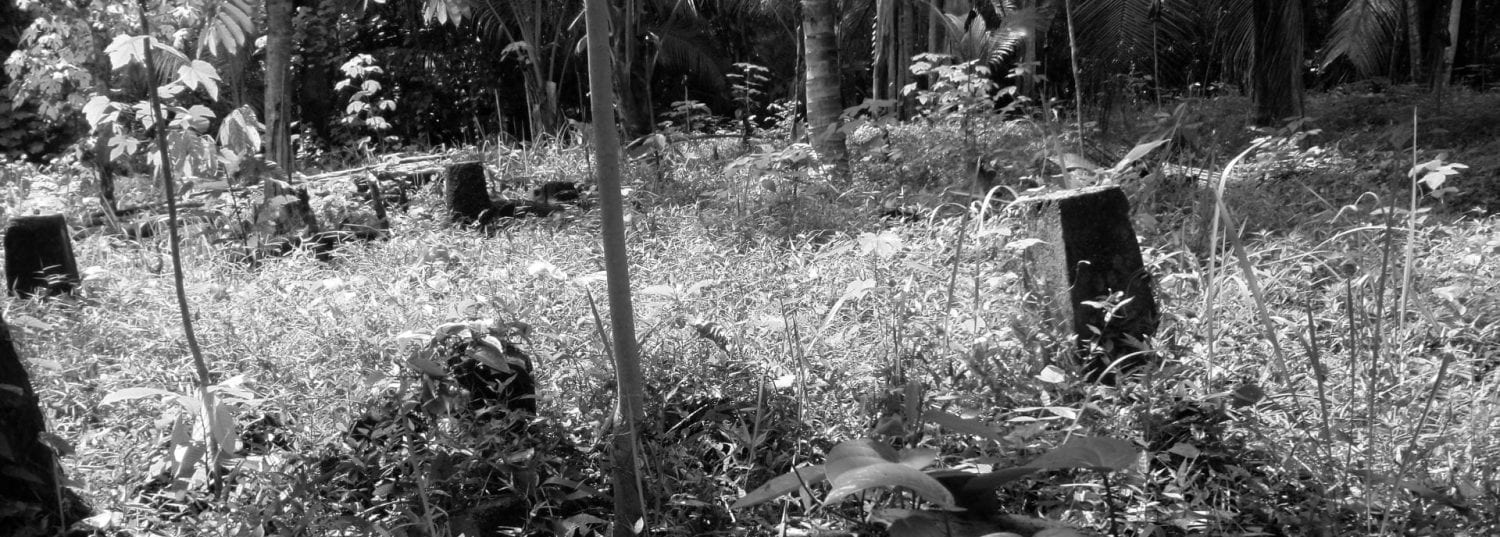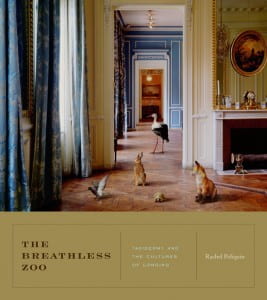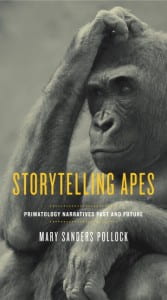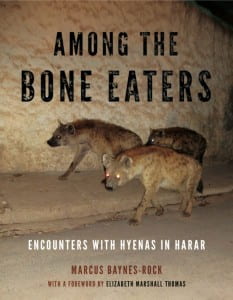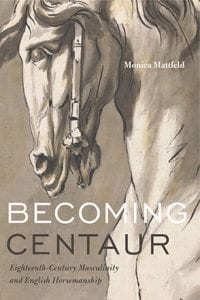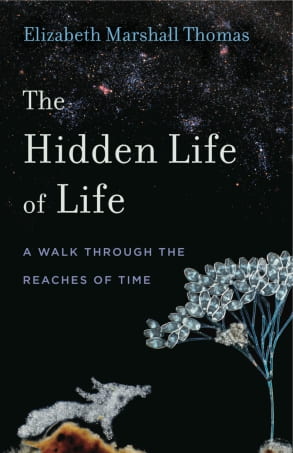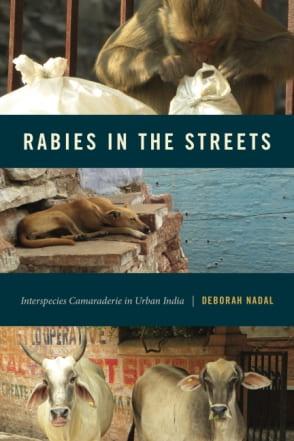In 2012 I founded the book series Animalibus: Of Animals and Cultures with the anthropologist Garry Marvin (Roehampton University), with support from Kendra Boileau, Editor-in-Chief at Penn State University Press. The books in the series come from a wide range of disciplines in the humanities and social sciences, including history, anthropology, social and cultural geography, environmental studies, and literary and art criticism. The books are not about “the field” of Animals Studies, but present original research and innovative analysis. If you have inquiries about the series, please don’t hesitate to contact me.
Below I excerpt materials about the books from the Penn State UP website. 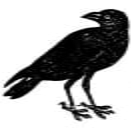
The Breathless Zoo: Taxidermy and the Cultures of Longing
“In the dead specimens she finds immortality; in their stasis, movement across the world. The result is a rich panorama of human ideas and desires.”
“From sixteenth-century cabinets of wonders to contemporary animal art, The Breathless Zoo: Taxidermy and the Cultures of Longing examines the cultural and poetic history of preserving animals in lively postures. But why would anyone want to preserve an animal, and what is this animal-thing now? Rachel Poliquin suggests that taxidermy is entwined with the enduring human longing to find meaning with and within the natural world. Her study draws out the longings at the heart of taxidermy—the longing for wonder, beauty, spectacle, order, narrative, allegory, and remembrance. In so doing, The Breathless Zoo explores the animal spectacles desired by particular communities, human assumptions of superiority, the yearnings for hidden truths within animal form, and the loneliness and longing that haunt our strange human existence, being both within and apart from nature.”
Gorgeous Beasts: Animal Bodies in Historical Perspective
“Gorgeous Beasts is a gorgeous book.”
“Gorgeous Beasts takes a fresh look at the place of animals in history and art. Refusing the traditional subordination of animals to humans, the essays gathered here examine a rich variety of ways animals contribute to culture: as living things, as scientific specimens, as food, weapons, tropes, and occasions for thought and creativity. History and culture set the terms for this inquiry. As history changes, so do the ways animals participate in culture. Gorgeous Beasts offers a series of discontinuous but probing studies of the forms their participation takes.
“This collection presents the work of a wide range of scholars, critics, and thinkers from diverse disciplines: philosophy, literature, history, geography, economics, art history, cultural studies, and the visual arts. By approaching animals from such different perspectives, these essays broaden the scope of animal studies to include specialists and nonspecialists alike, inviting readers from all backgrounds to consider the place of animals in history and art. Combining provocative critical insights with arresting visual imagery,Gorgeous Beasts advances a challenging new appreciation of animals as co-inhabitants and co-creators of culture.
“Aside from the editors, the contributors are Dean Bavington, Ron Broglio, Mark Dion, Erica Fudge, Cecilia Novero, Harriet Ritvo, Nigel Rothfels, Sajay Samuel, and Pierre Serna.”
Animals on Display: The Creaturely in Museums, Zoos, and Natural History
“After this book, the reader cannot look at commonplace images and figures of animals without thinking of how they are enframed and to what ends.”
“John Berger famously said that ‘in the last two centuries, animals have gradually disappeared.’ Those who share his view contend that animals have been removed from our daily lives and that we have been removed from the daily lives of animals. This has been the impetus for a plethora of representational practices that, broadly conceived, work to fill in the gap between humans and animals. Ironically, many of these may ultimately intensify the very nostalgia, distance, and ignorance they were devised to remedy.Animals on Display presents nine lively and engaging essays on the historical representation and display of nonhuman animals. Looking at a wide range of examples, many of them now little known, the essays situate them in their historical and sociocultural contexts, while speaking to the ongoing importance of making animals visible for the arrangement and sustenance of human-animal relations.
Aside from the editors, the contributors are Brita Brenna, Guro Flinterud, Henry A. McGhie, Brian W. Ogilvie, Nigel Rothfels, and Lise Camilla Ruud.”
Picturing Dogs, Seeing Ourselves: Vintage American Photographs
“. . . a story of love, domination, primitivism, and ‘Edenic longings’—embodied in the presence of the dog among humans.”
“Dogs are as ubiquitous in American culture as white picket fences and apple pie, embracing all the meanings of wholesome domestic life—family, fidelity, comfort, protection, nurturance, and love—as well as symbolizing some of the less palatable connotations of home and family, including domination, subservience, and violence. InPicturing Dogs, Seeing Ourselves, Ann-Janine Morey presents a collection of antique photographs of dogs and their owners in order to investigate the meanings associated with the canine body. Included are reproductions of 115 postcards, cabinet cards, andcartes de visite that feature dogs in family and childhood snapshots, images of hunting, posed studio portraits, and many other settings between 1860 and 1950. These photographs offer poignant testimony to the American romance with dogs and show how the dog has become part of cultural expressions of race, class, and gender.
“Animal studies scholars have long argued that our representation of animals in print and in the visual arts has a profound connection to our lived cultural identity. Other books have documented the depiction of dogs in art and photography, but few have reached beyond the subject’s obvious appeal. Picturing Dogs, Seeing Ourselves draws on animal, visual, and literary studies to present an original and richly contextualized visual history of the relationship between Americans and their dogs. Though the personal stories behind these everyday photographs may be lost to us, their cultural significance is not.”
Animal Companions: Pets and Social Change in Eighteenth-Century Britain
by Ingrid H. Tague
” . . . the first systematic treatment of pet keeping in Enlightenment Britain, traces the evolution of affection toward domestic animals from the beginning of the century, when pet keeping was stigmatized as a waste of human resources and feelings, to the end of the period, when compassion for animals was seen as a necessary sign of genuine humanness.”
“Although pets existed in Europe long before the eighteenth century, the dominant belief was that pet keeping was at best frivolous and at worst downright dangerous. In Animal Companions, Ingrid Tague explores the eighteenth-century conversation about the presence of pets in British society and the ways in which that conversation both reflected and shaped broader cultural debates. Tague argues that pets, as neither human nor fully part of the natural world, offered a unique way for Britons of the eighteenth century to articulate what it meant to be human and what their society ought to look like.
“Having emerged from the Malthusian cycle of dearth and famine at the end of the seventeenth century, England became the wealthiest nation in Europe, with unprecedented access to consumer goods of all kinds. And closely connected with these material changes was the Enlightenment, with its implications for contemporary understanding of religion, science, and non-European cultures. All these transformations generated both excitement and anxiety, and they were reflected in debates over the rights and wrongs of human-animal relationships. Looking at a wide variety of texts, Tague shows how pets became both increasingly visible indicators of spreading prosperity and catalysts for debates about the morality of the radically different society emerging in this period.”
Storytelling Apes: Primatology Narratives Past and Future
“The lives of our primate cousins, as well as those who study them with passion and devotion, are discerningly revealed by Mary Sanders Pollock, whose chronicle will be avidly read by all field naturalists and, I suspect, by everyone with a love for the natural world.”
“The annals of field primatology are filled with stories about charismatic animals native to some of the most challenging and remote areas on earth. There are, for example, the chimpanzees of Tanzania, whose social and family interactions Jane Goodall has studied for decades; the mountain gorillas of the Virungas, chronicled first by George Schaller and then later, more obsessively, by Dian Fossey; various species of monkeys (Indian langurs, Kenyan baboons, and Brazilian spider monkeys) studied by Sarah Hrdy, Shirley Strum, Robert Sapolsky, Barbara Smuts, and Karen Strier; and finally the orangutans of the Bornean woodlands, whom Biruté Galdikas has observed passionately. Humans are, after all, storytelling apes. The narrative urge is encoded in our DNA, along with large brains, nimble fingers, and color vision, traits we share with lemurs, monkeys, and apes. InStorytelling Apes, Mary Sanders Pollock traces the development and evolution of primatology field narratives while reflecting upon the development of the discipline and the changing conditions within natural primate habitat.
“Like almost every other field primatologist who followed her, Jane Goodall recognized the individuality of her study animals: defying formal scientific protocols, she named her chimpanzee subjects instead of numbering them, thereby establishing a trend. For Goodall, Fossey, Sapolsky, and numerous other scientists whose works are discussed inStorytelling Apes, free-living primates became fully realized characters in romances, tragedies, comedies, and never-ending soap operas. With this work, Pollock shows readers with a humanist perspective that science writing can have remarkable literary value, encourages scientists to share their passions with the general public, and inspires the conservation community.”
Elephant House
“. . . it will be impossible to come away from Elephant House unmoved.”
“In Elephant House, photographer Dick Blau and historian Nigel Rothfels offer a thought-provoking study of the Oregon Zoo’s Asian Elephant Building and the daily routines of its residents—human and pachyderm alike. Without an agenda beyond a desire to build a deeper understanding of this enigmatic environment, Elephant House is the result of the authors’ unique creative collaboration and explores the relationships between captive elephants and their human caregivers.
“Blau’s evocative photographs are complex and challenging, while Rothfels’s text offers a scholarly and personal response to the questions that surround elephants and captivity.Elephant House does not take sides in the debate over zoos but focuses instead on the bonds of attentiveness between the animals and their keepers. Accompanied by a foreword from retired elephant keeper Mike Keele, Elephant House is a frank, fascinating look at the evolving world of elephant husbandry.”
Among the Bone Eaters: Encounters with Hyenas in Harar
By Marcus Baynes-Rock, Foreword by Elizabeth Marshall Thomas
“[This] book is nothing short of amazing.”
“Biologists studying large carnivores in wild places usually do so from a distance, using telemetry and noninvasive methods of data collection. So what happens when an anthropologist studies a clan of spotted hyenas, Africa’s second-largest carnivores, up close—and in a city of a hundred thousand inhabitants? In Among the Bone Eaters, Marcus Baynes-Rock takes us to the ancient city of Harar in Ethiopia, where the gey waraba (hyenas of the city) are welcome in the streets and appreciated by the locals for the protection they provide from harmful spirits and dangerous “mountain” hyenas. They’ve even become a local tourist attraction.
“At the start of his research in Harar, Baynes-Rock contended with difficult conditions, stone-throwing children, intransigent bureaucracy, and wary hyena subjects intent on avoiding people. After months of frustration, three young hyenas drew him into the hidden world of the Sofi clan. He discovered the elements of a hyena’s life, from the delectability of dead livestock and the nuisance of dogs to the unbounded thrill of hyena chase-play under the light of a full moon. Baynes-Rock’s personal relations with the hyenas from the Sofi clan expand the conceptual boundaries of human-animal relations. This is multispecies ethnography that reveals its messy, intersubjective, dangerously transformative potential.”
Becoming Centaur: Eighteenth-Century Masculinity and English Horsemanship
By Monica Mattfeld
In this study of the relationship between men and their horses in seventeenth- and eighteenth-century England, Monica Mattfeld explores the experience of horsemanship and how it defined one’s gendered and political positions within society.
Men of the period used horses to transform themselves, via the image of the centaur, into something other—something powerful, awe-inspiring, and mythical. Focusing on the manuals, memoirs, satires, images, and ephemera produced by some of the period’s most influential equestrians, Mattfeld examines how the concepts and practices of horse husbandry evolved in relation to social, cultural, and political life. She looks closely at the role of horses in the world of Thomas Hobbes and William Cavendish; the changes in human social behavior and horse handling ushered in by elite riding houses such as Angelo’s Academy and Mr. Carter’s; and the public perception of equestrian endeavors, from performances at places such as Astley’s Amphitheatre to the satire of Henry William Bunbury. Throughout, Mattfeld shows how horses aided the performance of idealized masculinity among communities of riders, in turn influencing how men were perceived in regard to status, reputation, and gender.
Drawing on human-animal studies, gender studies, and historical studies, Becoming Centaur offers a new account of masculinity that reaches beyond anthropocentrism to consider the role of animals in shaping man.
Performing Animals: History, Agency, Theater
In exploring the human-animal relationship from the early modern period to the nineteenth century, Performing Animals questions what it means for an animal to “perform,” examines how these conceptions have evolved over time, and explores whether and how human understanding of performance is changed by an animal’s presence. The contributors discuss the role of animals in venues as varied as medieval plays, natural histories, dissections, and banquets, and they raise provocative questions about animals’ agency. In so doing, they demonstrate the innovative potential of thinking beyond the boundaries of the present in order to dismantle the barriers that have traditionally divided human from animal.
From fleas to warhorses to animals that “perform” even after death, this delightfully varied volume brings together examples of animals made to “act” in ways that challenge obvious notions of performance. The result is an eye-opening exploration of human-animal relationships and identity that will appeal greatly to scholars and students of animal studies, performance studies, and posthuman studies.
In addition to the editors, the contributors are Todd Andrew Borlik, Pia F. Cuneo, Kim Marra, Richard Nash, Sarah E. Parker, Rob Wakeman, Kari Weil, and Jessica Wolfe.
Where Honeybees Thrive: Stories from the Field
Through a lyrical combination of creative nonfiction and visual imagery, Where Honeybees Thrive tells the stories of the beekeepers, farmers, artists, entomologists, ecologists, and other advocates working to stem the damage and reverse course for this critical pollinator. Using her own quest for understanding as a starting point, Swan highlights the innovative projects and strategies these groups employ. Her mosaic approach to engaging with the environment not only reveals the incredibly complex political ecology in which bees live—which includes human and nonhuman actors alike—but also suggests ways of comprehending and tackling a host of other conflicts between postindustrial society and the natural world. Each chapter closes with an illustrative full-color gallery of bee-related artwork.
A luminous journey from the worlds of honey producers, urban farmers, and mead makers of the United States to those of beekeepers of Sichuan, China, and researchers in southern Africa, Where Honeybees Thrive traces the global web of efforts to secure a sustainable future for honeybees—and ourselves.
“Honeybees and humans are tightly linked, and the global demise of these keystone insects is both alarming and very bad news for the bees, humans, and numerous other nonhuman animals. Heather Swan’s book—the compelling text and beautiful artwork—makes it clear that bees and humans will suffer immeasurably as we try to endure ‘the rage of inhumanity’ and political ecology that characterize the Anthropocene unless we change our behavior right now. Coexistence is mandatory and time is not on our side. Where Honeybees Thrive is a reading experience reminiscent of Rachel Carson’s classic Silent Spring.”
—Marc Bekoff, co-author of The Animals’ Agenda: Freedom, Compassion, and Coexistence in the Human Age
The Hidden Life of Life: A Walk through the Reaches of Time
An iconoclast and best-selling author of both nonfiction and fiction, Elizabeth Marshall Thomas has spent a lifetime observing, thinking, and writing about the cultures of animals such as lions, wolves, dogs, deer, and humans. In this compulsively readable book, she provides a plainspoken, big-picture look at the commonality of life on our planet, from the littlest microbes to the largest lizards.
Inspired by the idea of symbiosis in evolution—that all living things evolve in a series of cooperative relationships—Thomas takes readers on a journey through the progression of life. Along the way she shares the universal likenesses, experiences, and environments of “Gaia’s creatures,” from amoebas in plant soil to the pets we love, from proud primates to Homo sapiens hunter-gatherers on the African savanna. Fervently rejecting “anthropodenial,” the notion that nonhuman life does not share characteristics with humans, Thomas instead shows that paramecia can learn, plants can communicate, humans aren’t really as special as we think we are—and that it doesn’t take a scientist to marvel at the smallest inhabitants of the natural world and their connections to all living things.
A unique voice on anthropology and animal behavior, Thomas challenges scientific convention and the jargon that prevents us all from understanding all living things better. This joyfully written book is a fascinating look at the challenges and behaviors shared by creatures from bacteria to larvae to parasitic fungi, a potted hyacinth to the author herself, and all those in between.
“Life comes in countless variations, yet all are based on the same biological principles. Elizabeth Marshall Thomas loves them all—from lichens to fungi and from crocodiles to primates—and puts us on a time machine to go back to the turns evolution has taken, many of them surprising, and one of them leading to us.”
Art for Animals: Visual Culture and Animal Advocacy, 1870–1914
Animal rights activists today regularly use visual imagery in their efforts to shape the public’s understanding of what it means to be “kind,” “cruel,” and “inhumane” toward animals. Art for Animals explores the early history of this form of advocacy through the images and the people who harnessed their power.
Following in the footsteps of earlier-formed organizations like the RSPCA and ASPCA, animal advocacy groups such as the Victoria Street Society for the Protection of Animals from Vivisection made significant use of visual art in literature and campaign materials. But, enabled by new and improved technologies and techniques, they took the imagery much further than their predecessors did, turning toward vivid, pointed, and at times graphic depictions of human-animal interactions. Keri Cronin explains why the activist community embraced this approach, details how the use of such tools played a critical role in educational and reform movements in the United States, Canada, and England, and traces their impact in public and private spaces. Far from being peripheral illustrations of points articulated in written texts or argued in impassioned speeches, these photographs, prints, paintings, exhibitions, “magic lantern” slides, and films were key components of animal advocacy at the time, both educating the general public and creating a sense of shared identity among the reformers.
Uniquely focused on imagery from the early days of the animal rights movement and filled with striking visuals, Art for Animals sheds new light on the history and development of modern animal advocacy.
“A welcome and much-needed addition to the growing literature on animals and art. In particular, Cronin’s book, which is focused on the historical period when the first wave of the animal protection movement emerged, demonstrates the role that visual media played in the development of that movement. But the book is far more than a historical snapshot. Activists’ use of representations of animals—and animal suffering—is just as important (if not more so) in the modern animal rights movement of today. Art for Animals will appeal to anyone with an interest in how people have worked to combat animal abuse in the past, and how they do so today.”
Pet Projects: Animal Fiction and Taxidermy in the Nineteenth-Century Archive
By Elizabeth Young
n Pet Projects, Elizabeth Young joins an analysis of the representation of animals in nineteenth-century fiction, taxidermy, and the visual arts with a first-person reflection on her own scholarly journey. Centering on Margaret Marshall Saunders, a Canadian woman writer once famous for her animal novels, and incorporating Young’s own experience of a beloved animal’s illness, this study highlights the personal and intellectual stakes of a “pet project” of cultural criticism.
Young assembles a broad archive of materials, beginning with Saunders’s novels and widening outward to include fiction, nonfiction, photography, and taxidermy. She coins the term “first-dog voice” to describe the narrative technique of novels, such as Saunders’s Beautiful Joe, written in the first person from the perspective of an animal. She connects this voice to contemporary political issues, revealing how animal fiction such as Saunders’s reanimates nineteenth-century writing about both feminism and slavery. Highlighting the prominence of taxidermy in the late nineteenth century, she suggests that Saunders transforms taxidermic techniques in surprising ways that provide new forms of authority for women. Young adapts Freud to analyze literary representations of mourning by and for animals, and she examines how Canadian writers, including Saunders, use animals to explore race, ethnicity, and national identity. Her wide-ranging investigation incorporates twenty-first as well as nineteenth-century works of literature and culture, including recent art using taxidermy and contemporary film. Throughout, she reflects on the tools she uses to craft her analyses, examining the state of scholarly fields from feminist criticism to animal studies.
With a lively, first-person voice that highlights experiences usually concealed in academic studies by scholarly discourse—such as detours, zigzags, roadblocks, and personal experience—this unique and innovative book will delight animal enthusiasts and academics in the fields of animal studies, gender studies, American studies, and Canadian studies.
“Pet Projects takes animal humanities research to new heights. Recovering the animal-advocacy stories of Canada’s first best-selling author, Margaret Marshall Saunders, Young also uses feminist personal criticism to frame a timely history of animal studies, one that calls out the desires of so many to invent the field, while at the same time identifying how its development has involved collaborative negotiations at the crossroads of disciplines.”
Crocodile Undone: The Domestication of Australia’s Fauna
By Marcus Baynes-Rock, “Foreword” by Agustín Fuentes
Across the world, animals are being domesticated at an unprecedented rate and scale. But what exactly is domestication, and what does it tell us about ourselves? In this book, Marcus Baynes-Rock seeks the common thread linking stories about the domestication of Australia’s native animals, arguing that domestication is part of a process by which late modernity threatens to undo the world.
In a deeply personal account, the author tells of his encounters with crocodiles and emus behind fences, dingoes and kangaroos crossing boundaries, and native bees producing honey in his suburban backyard. Drawing on comparisons between Aboriginal and colonial Australians, Baynes-Rock reveals how the domestication of Australia’s fauna is a process of “unmaking.” As an extension of late modernity, the connections that tie humans and other animals to wider ecologies are being severed, threatening to isolate us and our domesticates from the rest of the world. It is here that Baynes-Rock reveals a key difference between Aboriginal and colonial Australian modes of landscape management: while one is focused on a systemic approach and sees humans as integral to ecological integrity, the other seeks to sever domesticates from ecological processes. The question that emerges is: How might we reconfigure and maintain these connections without undoing humanity?
Written in the author’s characteristically frank, passionate, and humorous style, Crocodile Undone takes the reader on a journey across both physical and philosophical landscapes. This fascinating narrative will appeal to anyone interested in the vital connections between humans and animals.
“Baynes-Rock raises fundamental questions about private property, the fallacies of economics, and the wisdom of ecology. The challenges may be great, but at least this book presents ideas and possibilities that may help us face them.”
Rabies in the Streets: Interspecies Camaraderie in Urban India
By Deborah Nadal
Found in two-thirds of the world, rabies is a devastating infectious disease with a 99.9 percent case-fatality rate and no cure once clinical signs appear. Rabies in the Streets tells the compelling story of the relationship between people, street animals, and rabies in India, where one-third of human rabies deaths occur. Deborah Nadal makes the case that only a One Health approach of “interspecies camaraderie” can save people and animals from the horrors of rabies and almost certain death.
Grounded in multispecies ethnography, this book leads the reader through the streets and slums of Delhi and Jaipur, where people and animals, such as dogs, cows, and macaques, interact intimately and sometimes violently. Nadal explores the intricate web of factors that bring humans and animals into contact with one another within these urban spaces and create favorable pathways for the transmission of the rabies virus across species. This book shows how rabies is endemic in India for reasons that are as much social, cultural, and political as they are biological, ranging from inadequate sanitation to religious customs, from vaccine shortages to reliance on traditional medicine.
The continuous emergence (and reemergence) of infectious diseases despite technical medical progress is a growing concern of our times and clearly questions the way we think of animal and environmental health. This original account of rabies challenges conventional approaches of separation and extermination, arguing instead that a One Health approach is our best chance at fostering mutual survival in a world increasingly overpopulated by humans, animals, and deadly pathogens.
“In this fascinating, accessible, and well-written text, Nadal considers various conceptualizations of rabies in India and the multidimensional challenges involved in controlling viral transmission within a One Health framework.”
Canis Modernis: Human/Dog Coevolution in Modernist Literature
Modernist literature might well be accused of going to the dogs. From the strays wandering the streets of Dublin in James Joyce’s Ulysses to the highbred canine subject of Virginia Woolf’s Flush, dogs populate a range of modernist texts. In many ways, the dog in the late nineteenth and early twentieth centuries became a potent symbol of the modern condition—facing, like the human species, the problem of adapting to modernizing forces that relentlessly outpaced it. Yet the dog in literary modernism does not function as a stand-in for the human.
In this book, Karalyn Kendall-Morwick examines the human-dog relationship in modernist works by Virginia Woolf, Jack London, Albert Payson Terhune, J. R. Ackerley, and Samuel Beckett, among others. Drawing from the evolutionary theories of Charles Darwin and the scientific, literary, and philosophical work of Donna Haraway, Temple Grandin, and Carrie Rohman, she makes a case for the dog as a coevolutionary and coadapting partner of humans. As our coevolutionary partners, dogs destabilize the human: not the autonomous, self-transparent subject of Western humanism, the human is instead contingent, shaped by its material interactions with other species. By demonstrating how modernist representations of dogs ultimately mongrelize the human, this book reveals dogs’ status both as instigators of the crisis of the modern subject and as partners uniquely positioned to help humans adapt to the turbulent forces of modernization.
Accessibly written and convincingly argued, this study shows how dogs challenge the autonomy of the human subject and the humanistic underpinnings of traditional literary forms. It will find favor with students and scholars of modernist literature and animal studies.
“A long-overdue, definitive statement about the importance of dogs in modernist literary fictions by a rising star of a new generation in literary animal studies. Starting from the observation that ‘dogs populate a range of modernist texts yet remain notably absent from critical accounts of the period,” it fills a tremendous gap in understandings of how and why literary representations both reflect and influence the conceptual crisis of humanism that comes to a head in the twentieth century.”
Becoming Audible: Sounding Animality in Performance
Becoming Audible explores the phenomenon of human and animal acoustic entanglements in art and performance practices. Focusing on the work of artists who get into the spaces between species, Austin McQuinn discovers that sounding animality secures a vital connection to the creatural.
To frame his analysis, McQuinn employs Gilles Deleuze and Félix Guattari’s concept of becoming-animal, Donna Haraway’s definitions of multispecies becoming-with, and Mladen Dolar’s ideas of voice-as-object. McQuinn considers birdsong in the work of Beatrice Harrison, Olivier Messiaen, Céleste Boursier-Mougenot, Daniela Cattivelli, and Marcus Coates; the voice of the canine as a sacrificial lab animal in the operatic work of Alexander Raskotov; hierarchies of vocalization in human-simian cultural coevolution in theatrical adaptations of Franz Kafka and Eugene O’Neill; and the acoustic exchanges among hybrid human-animal creations in Harrison Birtwistle’s opera The Minotaur. Inspired by the operatic voice and drawing from work in art and performance studies, animal studies, zooarchaeology, social and cultural anthropology, and philosophy, McQuinn demonstrates that sounding animality in performance resonates “through the labyrinths of the cultural and the creatural,” not only across species but also beyond the limits of the human.
Timely and provocative, this volume outlines new methods of unsettling human exceptionalism during a period of urgent reevaluation of interspecies relations. Students and scholars of human-animal studies, performance studies, and art historians working at the nexus of human and animal will find McQuinn’s book enlightening and edifying.
“Becoming Audible provides a compelling array of contemporary artworks that explore animality alongside or at the limits of culture.”
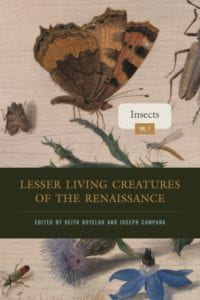
Lesser Living Creatures of the Renaissance, Volumes 1, Concepts.
Ed. Keith Botelho and Joseph Campana.
Lesser Living Creatures examines literary and cultural texts from early modern England in order to understand how people in that era thought about—and with—insect and arachnid life. Designed for the classroom, the book comprises two volumes—Insects and Concepts—that can be used together or independently. Each addresses the collaborative, multigenerational research that produced early modern natural history and provides new insights into the old question of what it means to be human in a world populated by beasts large and small.
Volume 1, Insects, examines how insects burrowed into the literal and symbolic economies of the era. The contributors consider diminutive creatures—such as bees and beetles, flies and fleas, silkworms and spiders—and their depictions in plays, poetry, fables, natural histories, and more. In doing so, they illuminate how early modern science and literature worked as intersecting systems of knowledge production about the natural world and show definitively how insect life was, and remains, intimately entangled with human life.
In addition to the editors, contributors to this volume include Chris Barrett, Roya Biggie, Bruce Boehrer, Gary Bouchard, Dan Brayton, Eric Brown, Mary Baine Campbell, Perry Guevara, Shannon Kelley, Emily King, Karen Raber, Kathryn Vomero Santos, Donovan Sherman, and Steven Swarbrick.
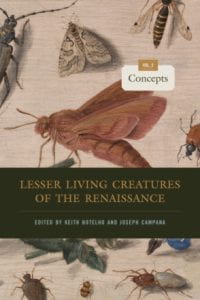
Volume 2, Concepts, explores ideas that cut across species, insect and otherwise, both building on and invigorating critical vocabularies developed over nearly two decades of early modern animal studies. The contributors explore topics such as the medical and culinary consumption of insects; extermination campaigns; the auditory and emotive effects of a swarm; insects and politics; and notions of infestation, stinging, and creeping. Throughout, they illuminate how early modern science and literature worked as intersecting systems of knowledge production about the natural world and show definitively how insect life was, and remains, intimately entangled with human life.
In addition to the editors, contributors to this volume include Lucinda Cole, Frances E. Dolan, Lowell Duckert, Andrew Fleck, Rebecca Laroche, Jennifer Munroe, Amy L. Tigner, Jessica Lynn Wolfe, Derek Woods, and Julian Yates.

Maritime Animals: Ships, Species, Stories
Ed. Kaori Nagai
This volume explores nonhuman animals’ involvement with human maritime activities in the age of sail—as well as the myriad multispecies connections formed across different geographical locations knitted together by the long history of global ship movement.
Far from treating the ship as a confined space defined by the sea, Maritime Animals considers the ship’s connections to broader contexts and networks and covers a variety of locations, from the Canadian Arctic to the Pacific Islands. Each chapter focuses on the oceanic experiences of a particular species, from ship vermin, animals transported onboard as food, and animal specimens for scientific study to livestock, companion and working animals, deep-sea animals that find refuge in shipwrecks, and terrestrial animals that hunker down on flotsam and jetsam. Drawing on recent scholarship in animal studies, maritime studies, environmental humanities, and a wide range of other perspectives and storytelling approaches, Maritime Animals challenges an anthropocentric understanding of maritime history. Instead, this volume highlights the ways in which species, through their interaction with the oceans, tell stories and make histories in significant and often surprising ways.
In addition to the editor, the contributors to this volume include Anna Boswell, Nancy Cushing, Lea Edgar, David Haworth, Donna Landry, Derek Lee Nelson, Jimmy Packham, Laurence Publicover, Killian Quigley, Lynette Russell, Adam Sundberg, and Thom van Dooren.
